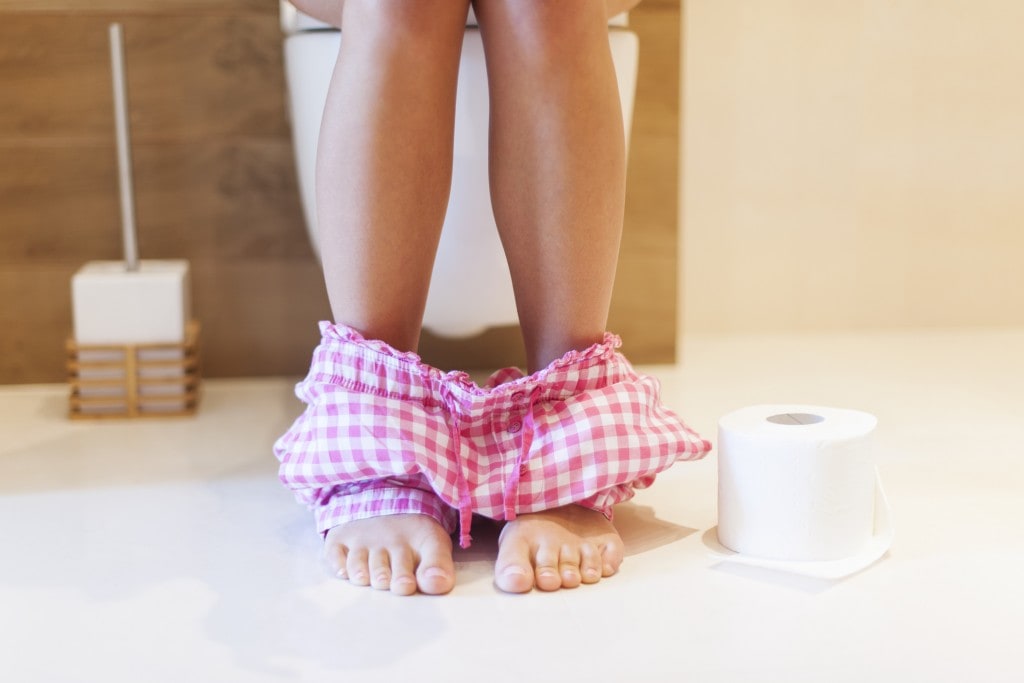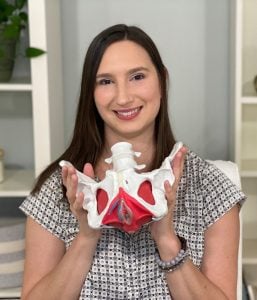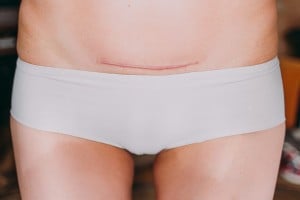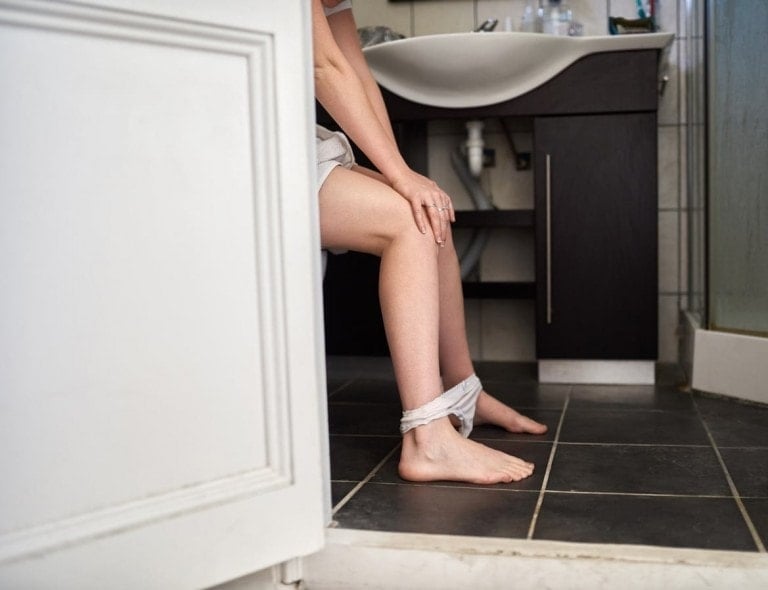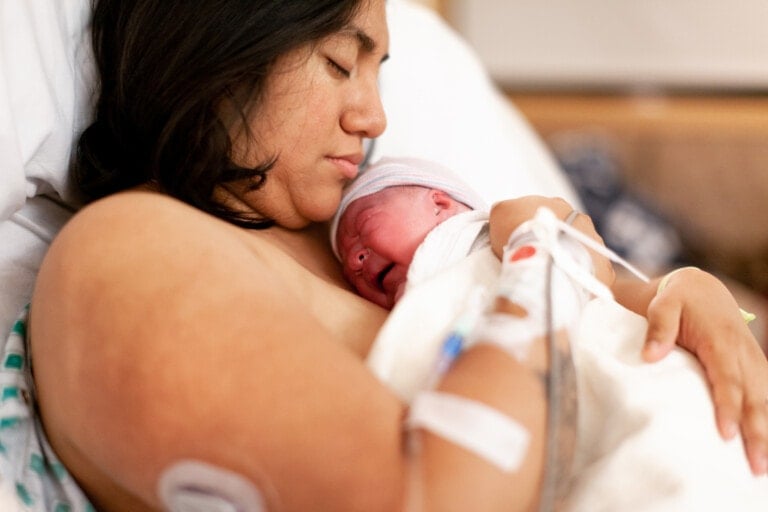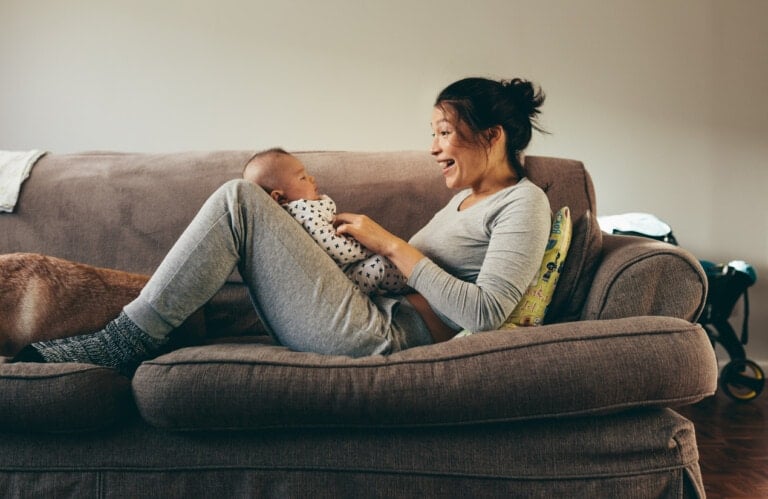Over the years, I’ve helped a lot of moms in many ways. I’ve helped women to stop urinary leaking and heal pelvic pain. I have helped women regain pain-free and pleasurable intimacy and eliminate back pain. One of the heartbreakingly common statements is, “I wish someone had told me…” The moms I see wish someone had taught them how to use their pelvic floor muscles to push, prevent pelvic organ prolapse, and reactivate their pelvic floor and core. Or how to stretch to eliminate shoulder and neck pain after feeding. Although I treat constipation as part of my practice, one issue I never expected to come up so often was the agony of taking the first poop after birth.
Everybody Poops: But How?
Defecation, or pooping, requires the pelvic floor muscles and anal sphincters to open. Your pelvic floor muscles are normally closed to stop you from leaking urine or stool. These mighty muscles also support your bladder, uterus, and bowels, and help keep you upright. Your abdominal muscles add another necessary component to pooping by creating gentle downward pressure to help eliminate stool.
Why is That First Poo Such a Pain in the You-Know-What?
There are several reasons why that first poop after birth is difficult. If you gave birth vaginally, your pelvic floor muscles had to stretch significantly wider than normal: 326% more than at rest. There is a 90% chance you had a tear during your first vaginal birth. The most common area of tearing is between your vaginal opening and your anus, called your perineum. This is a crucial structure helping keep everything lifted.
So there’s been a massive stretch of your pelvic muscles during birth, possibly tearing. And you used your abdominal muscles to help push out your darling baby. To enable that first poop, you are trying to open your exhausted and sore muscles. But the perineum that helps support everything has been stretched and is just starting to heal. Those healing areas aren’t going to be thrilled to have something else, even a small bowel movement, pass by. Therefore, everything is a bit lower than normal and unable to produce counter pressure to open your back passage. Simultaneously, your abdominals are now exhausted and can’t help push.
If you’ve given birth via cesarean, you may still have difficulty going because your abdominal muscles help with defecation and are exhausted.
6 Tips to Ease the Go
1. Take a stool softener.
If you haven’t been taking a stool softener a few days or weeks before birth, begin taking one the day you are in labor and a few days after. Your hospital or birthing center will likely offer a stool softener. Be sure to check that you are taking the correct dosage if you bring your own. A stool softener does not work as a laxative. Instead, it softens your stool by adding moisture, making it easier to pass. Along with a stool softener, ensure you stay hydrated and eat fiber-rich foods.
2. Elevate your feet on a stool.
Have you heard of the squatty potty? There is excellent science showing that if your knees are elevated above the level of your hips, the pelvic floor muscles that sling around your back passage release, and everything opens up.1 Yes, you have been pooping wrong your whole life!
Not everyone will have a squatty potty in their hospital room. Look around for a trash can, a full bag, a large book, or anything sturdy that you can rest your feet on.
3. Support your perineum.
After that massive stretch of your pelvic floor muscles with a vaginal birth, providing gentle upward support will help give counter pressure and allow you to open your muscles without them dropping down. To do this, get a warm washcloth and gently press upward on that middle area between the front and back while you go.
After you have passed your first poop after birth, wiping can be intimidating. Use a peri bottle filled with warm water for the first few weeks to spray clean your bottom and gently blot dry. Tucks pads and padsicles can also help heal your bottom from pushing out a baby, the placenta, and your first poops.
4. Deep breaths.
Take a few deep breaths into your rib cage and belly. Breathing allows your diaphragm to move downward, giving your colon a massage from the inside and helping move everything along.
5. Practice pelvic floor relaxation.
Take some time to learn how to open your pelvic floor muscles correctly. They need to open during defecation and to birth your baby.
6. Visit a pelvic floor physical therapist!
A pelvic floor PT can check your muscles and help you set up an individual plan to help you push your muscles open using your breath. While there, a pelvic floor PT can help ease any back or pelvic pain, teach you how to prepare to heal postpartum, and stop leaking!
If you’ve had trouble with that first poop after birth or are currently worrying about it, know that you’re not alone and there is help. Remember, taking care of mom equals taking care of the baby. You will be able to best enjoy those first beautiful hours with your newest love if you know how to help your body heal.
Disclaimer: This does not constitute or replace medical advice or evaluation.













